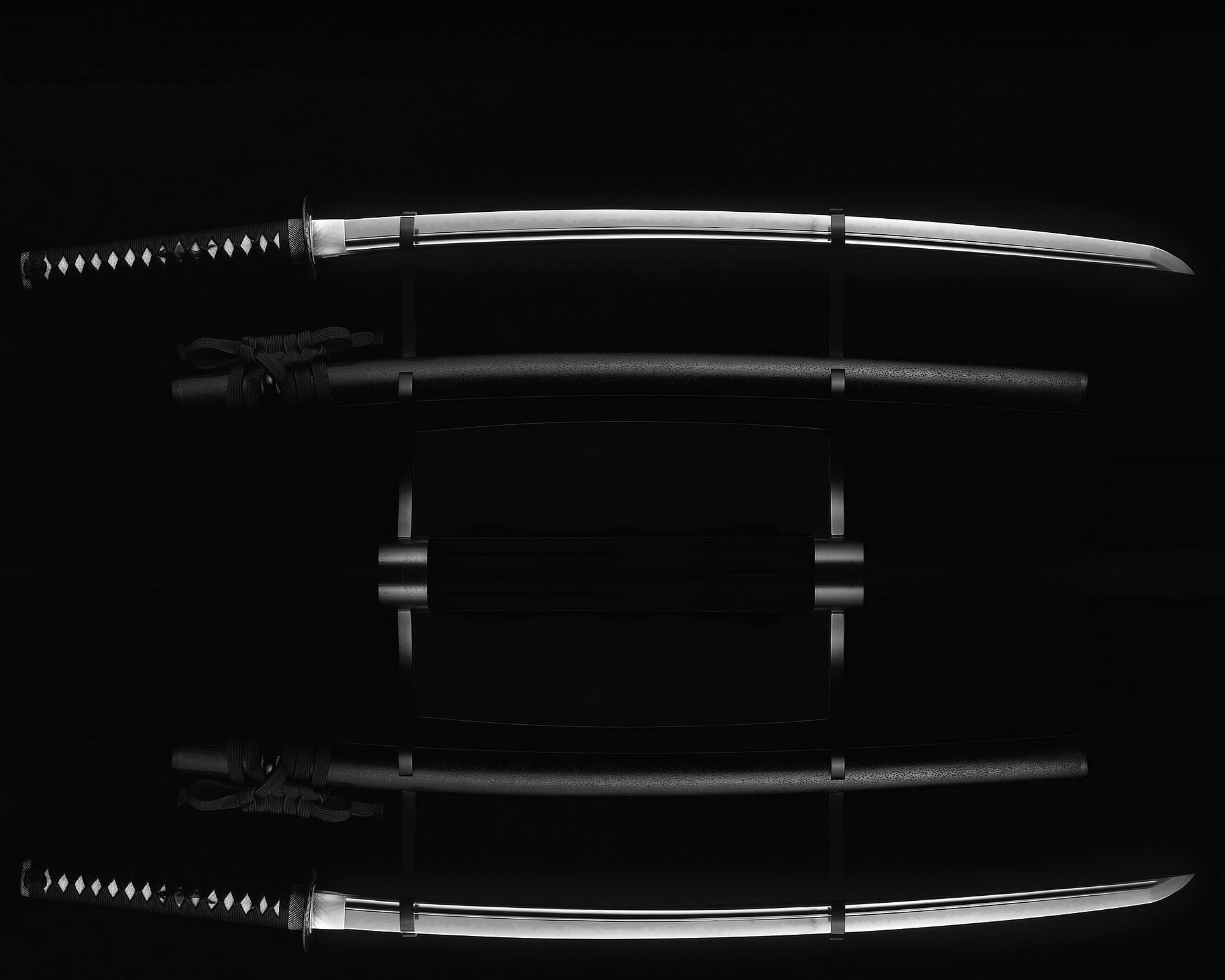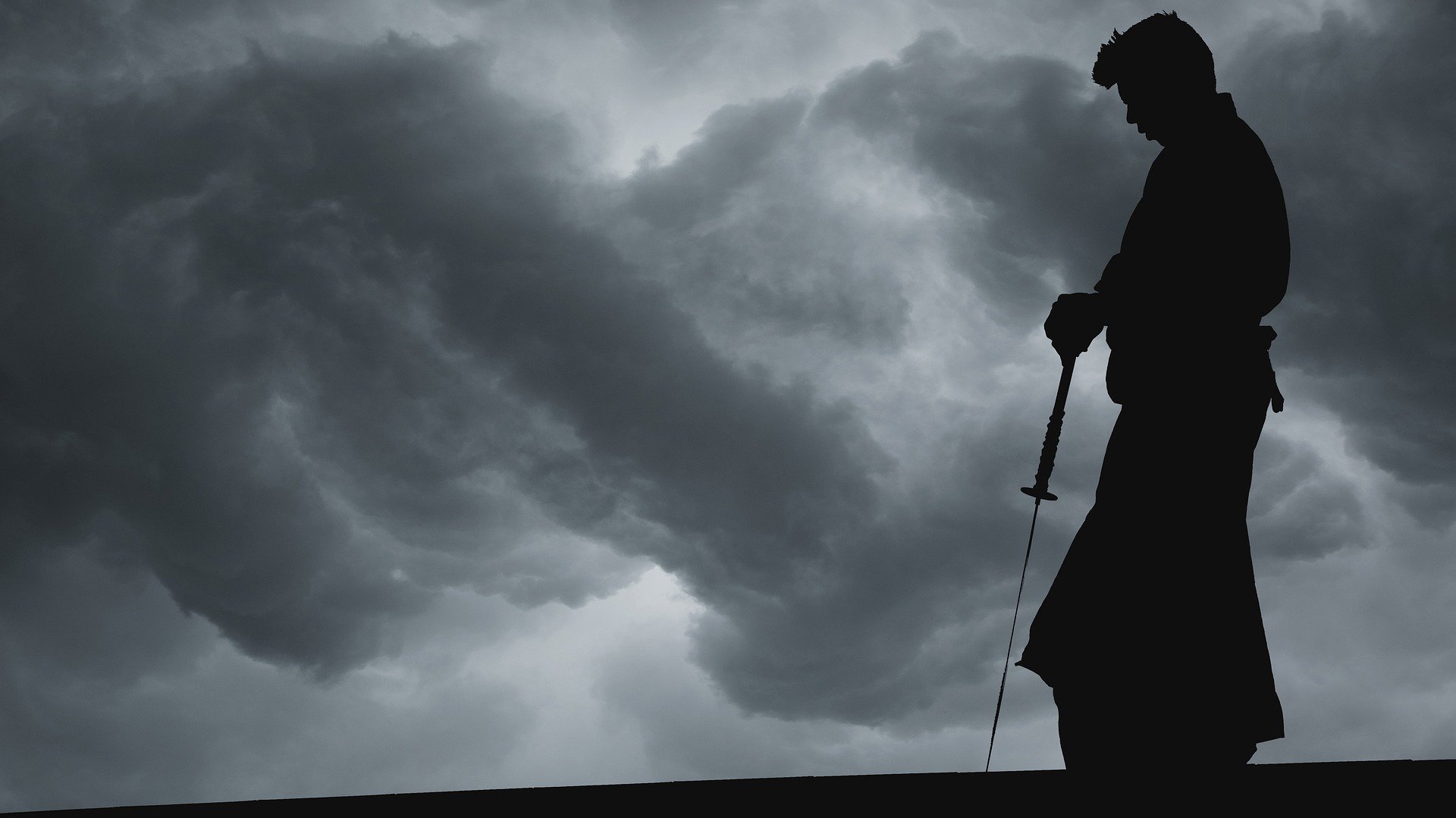How to care for your Japanese katana sword

Blade maintenance is very important to preserve the finish of your sword.
A maintenance kit allows you to maintain your blade the same way as the maker intended, sometimes hundreds of years ago.
Blade maintenance should be performed at least every six months and any time the blade is touched – natural oils on the skin can cause rapid corrosion of high-grade steel.
※If any person touches the blade with their bare hand, please clean the blade as soon as possible.
Contents of maintenance kit
- Two new cloths, for removing oil or powder. (these cloths are washable)
- Blade oil
- Powder ball, for applying polishing powder to blade – this ball is called uchiko.
- Cotton swabs in a case – these are used for applying oil to the blade.
- Brass hammer – called a mekugi nuki – for removing and reinserting a bamboo pin – the mekugi – in the handle of the katana.
During maintenance, powder and dust can accumulate in the metal fittings – habaki – between the blade and the handle We recommend that you clean the habaki lightly once a year by removing the handle
※ Be sure to wipe the blade in one direction only – from the front to the tip. This prevents scratching on the blade.

Blade maintenance is very important to preserve the finish of your sword.
Katana Maintenance Steps
- First, use a clean cloth to remove oil from previous maintenance, holding the edge of the blade away from you and working very carefully to avoid injury.
(Note: Two cloths are included in the maintenance kit. Do not mix cloths when removing oil and/or removing powder. We recommend separate usage.) - Next tap the uchiko powder ball lightly against the blade every 4 or 5cm, dusting the blade very lightly with powder.
(Note: when using the ball for the first time, you may need to tap the ball against the blade a number of times to start the powder flow through the fabric of the ball.) - Then use the other clean cloth to carefully rub and polish the blade.
Repeat until both sides of the blade have been polished and the powder completely removed.
(Note: The powder has the effect of removing oil and slightly polishing the blade. If you wipe the blade with powder without oil, small scratches will occur. When using the powder please use moderate force and frequency.)


- Once all the oil has been removed, this state is the most suitable condition for appreciating your Japanese katana sword. Apply a few drops of oil along the length of each side of the blade and use a clean cotton swab from the case to spread the oil evenly over the blade.
Be sure not to touch the blade again before re-sheathing. Rust develops on the blade from moisture or skin oil.
The oil for blade serves as a protective membrane. - Please do not rub off any rust from the grip portion of the blade.
It is an element used to reflect the age of the blade and is one of its prized artistic expressions.
Replace the handle and re-insert the mekugi pin, then return the blade to its sheath.
Trivia
Points to note when it comes to sword care

Katana are a cultural asset and an item of sublime beauty – not just for the Japanese but for all humanity.
Incorrect maintenance and poor storage conditions can lead to damage to the blade, which can then in turn lead to injuries to the owner or to other people.
Please learn how to perform proper maintenance on these swords so that future generations can enjoy and appreciate these cultural assets.
How to Care for your Japanese Sword
The katana is a treasured item for the Japanese.
- Incorrect maintenance and poor storage conditions can lead to damage to the blade, which can then in turn lead to injuries to the owner or to other people.
- Be sure to keep any certificates related to your sword – our advice is to store these documents with the sword.
- Take and keep a copy of all certificates/paperwork related to your sword. They will come in useful in the unlikely event that your sword goes missing.


How to remove your sword from its sheath
- Your left hand will grasp the scabbard portion of the sheathed sword from below, with the point facing away from you and the handle closest to you.
- Your right hand will grasp the handle from the top.
- Slowly slide the blade free of the scabbard, keeping the blade and scabbard straight.
Note: do not tilt or twist the blade at an angle when removing from the scabbard as this can cause damage to both the blade and the scabbard. This can be doubly upsetting when you are handling someone else’s sword.
How to replace a sword into its sheath
- Reverse the procedure for removing the sword – your left hand grasps the scabbard portion of the sheathed sword from below, and your right hand grasps the handle from the top.
- With the blade should be facing upwards – slide the tip of the blade into the scabbard, slowly re-sheathing the blade.
- When the blade is almost completely re-sheathed, a slight push to close the final inch will be accompanied by a satisfying click.
*Do not force the blade back into the sheath, using excessive force can damage the scabbard.

